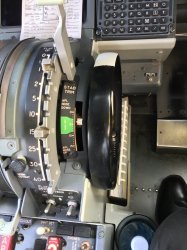AviatorInsight
Established Member
- Joined
- Oct 5, 2016
- Posts
- 1,399
Im putting an MCAS question here rather than the Ethiopian 737Max8 thread because we dont know what happened to ET302
Boeing says MCAS electrical trim can be turned off - just like the procedure for a Runaway trim.
However, MCAS does not present as a runaway trim, rather it pushes trim nose down 2 deg then stops then keeps doing 2 deg every few seconds. (But it still would be an Pilot uncommanded trim).
Is it possible therefore because it does not look like a runaway trim, the pilots are not thinking to use the runaway trim procedure as a fix (remembering the fight deck would at this time be quite chaotic and startling)
I'm not reading that at all.
If the aircraft is actually approaching the stall with no other erroneous data, then MCAS is designed to trim nose down, great, crisis averted. However...if in conjunction with an unreliable airspeed/altitude/AoA/plus a couple of others and you get an uncommanded nose down trim, that to me would be a runaway. The nose down trim can last up to 10 seconds (that's a lot of trim!!). I then trim back via the electrical switches while still fighting the thing. If I then let go of the electrical trim and 5 seconds later it starts trimming forward again (uncommanded) that's a runaway trim. This cycle will continue to occur until the system is deactivated by BOTH the STAB CUTOUT switches.















